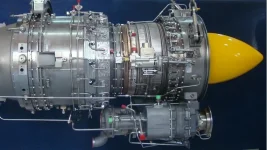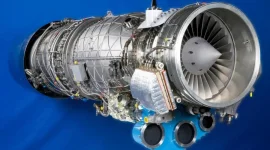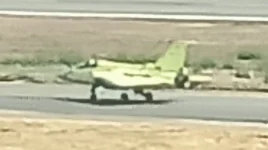- Views: 2K
- Replies: 2
The rapid advancement of the Hindustan Turbo Fan Engine (HTFE-25) by Hindustan Aeronautics Limited (HAL) is increasingly seen as a cornerstone for India's ambitions in developing next-generation aerial combat systems, particularly stealth unmanned combat aerial vehicles (UCAVs) such as the Ghatak and the CATS Warrior.
As global military aviation moves towards unmanned and stealth technologies, the success of this indigenous engine project is vital for India's strategic autonomy and defence preparedness.
The HTFE-25, a 25 kilonewton (kN) thrust engine, is designed to power a variety of aerial platforms. These include critical assets like loyal wingman drones, which fly in support of manned fighter aircraft, and potentially future stealth bombers. Developing such systems domestically is essential for India to effectively address evolving security challenges, particularly from neighbouring countries.
Speeding up the HTFE-25's development timeline would significantly enhance India's air combat strength and align with the national goal of "Aatmanirbhar Bharat," or self-reliant India, by reducing dependence on foreign engine suppliers.
Developed by HAL's Engine Division in Bengaluru, the HTFE-25 is a turbofan engine with a low bypass ratio, engineered for applications demanding a compact design, substantial power relative to its weight, and fuel economy.
It is expected to produce 25 kN of thrust, equivalent to approximately 5,600 pounds-force. This makes it suitable for platforms such as the HAL Hawk Mk-132 advanced jet trainer, smaller fighter aircraft, and various unmanned aerial vehicles (UAVs).
The engine incorporates modern features like a Full Authority Digital Engine Control (FADEC) system for optimized performance, advanced single-crystal turbine blades for durability at high temperatures, and refined aerodynamics.
While initial testing phases were completed in 2021, and as of May 2025, the engine is reportedly undergoing critical high-altitude and performance trials, experts suggest that achieving full certification and starting production could still take several years unless the project receives a significant push.
The versatility of the HTFE-25 makes it a strong candidate for several key components of India's future air power strategy:
- Loyal Wingman Drones: These advanced UAVs, exemplified by India's Combat Air Teaming System (CATS) Warrior program developed by the Defence Research and Development Organisation (DRDO) and HAL, are designed to operate alongside manned aircraft like the Tejas Mk-2 or the upcoming Advanced Medium Combat Aircraft (AMCA). Such drones require compact yet powerful engines like the HTFE-25 to improve the overall effectiveness and safety of combat missions.
- Stealth Unmanned Combat Aerial Vehicles (UCAVs): For deep penetration strike missions requiring stealth, India is developing UCAVs like the DRDO Ghatak. A reliable, domestically produced engine is paramount for such strategically vital assets to ensure operational independence. The HTFE-25, or an engine derived from its technology, is considered a prime candidate to power Ghatak, thereby avoiding reliance on international suppliers.
- Advanced Medium Combat Aircraft (AMCA) Program: While the initial versions of India’s fifth-generation stealth fighter, the AMCA, are planned to use imported GE F414 engines, the HTFE-25 could potentially power smaller stealth aircraft or serve as a foundational technology for developing larger engines, such as the 110 kN thrust engine envisioned for later versions of the AMCA.
- Trainer Aircraft: The HTFE-25 could also be used to upgrade existing trainer aircraft like the Hawk Mk-132, promoting commonality in engine types across different aircraft, which can simplify maintenance and reduce operational costs.
India has previously faced difficulties in mastering this technology, as seen in the delays with the Kaveri engine program and co-production of other foreign engines.
While the HTFE-25 is a less complex design than the Kaveri, it still necessitates considerable investment in specialised test infrastructure, including high-altitude testing facilities and aircraft to serve as flying testbeds, to meet a certification target, which currently stands around 2028–2030 without accelerated measures.
The global trend towards advanced stealth aircraft and unmanned systems underscores the urgency for India to invest decisively in platforms like the CATS Warrior and the Ghatak UCAV.
The CATS Warrior, intended to team with Indian Air Force aircraft like the Su-30 MKI and Tejas, will need a dependable engine to perform high-risk tasks such as suppressing enemy air defences.
Similarly, a potent UCAV like Ghatak would greatly enhance India’s ability to strike heavily defended targets deep within enemy territory. The HTFE-25, with its planned performance characteristics, is well-suited for these roles.
Delays in its development could, however, compel India to seek imported engines, potentially compromising long-term strategic objectives and the push for self-reliance in critical defence technologies.



